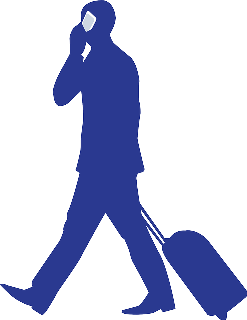The changing nature of work in Europe and the UK and its reorganisation spatially as a result of technology, was the subject of a 26 August seminar delivered by WOW guest, Dr Donald Hislop (Loughborough University, UK).
Expanding upon Manuel Castells’ (1996) work around the nature of remotely operating mediums of communication which facilitate networking, and the simultaneous impact of economic globalisation on the flow of goods, people, and information between territories, Dr Hislop shared findings from his own research addressing the increasing importance of flow and mobility for managers and professionals (M&Ps) — in this instance, ‘white collar’ workers — as they undertake ‘business travel’ – or journeys between various work locations – intrinsic to their job.

Distinguished from ‘commuters’ who travel from home to work, business travellers must respond to a growing need to coordinate their tasks between more than one work site, particularly as multinational corporations disperse to wider locations, highlights Donald(pictured above, right). Although inter-organisational collaboration and face-to-face contact still plays an important role as trust and interpersonal relationships are built or maintained, identifying and understanding the diversity of M&Ps and their frequency and purpose of travel are also important factors for analysis, he adds.
In the UK and European contexts there are only a handful of longitudinal studies which consider M&P workers’ mobility patterns. In highlighting three (Lilischkis (2003), Wickham and Vecchi (2010), and Millar and Salt (2008)), Donald suggests that the neglect of spatial considerations, including a bias towards international mobility, has left a big gap.
In response, he proposes five new dimensions for integration into these existing typologies (again designed with the European and UK context in mind); they include the localised, the regional, the national, the international: intra-continental, and the international: inter-continental business traveller. And whilst the yardstick for ‘local’ and ‘regional’ travel differs greatly when applied to Australian business travel, Donald concludes that although:
“…M&P workers who regularly travel are in a minority, [the] proportion is increasing. In making sense of the diversity of spatial scales in business travel…the impacts of the journey on the worker – for example, work-life balance, stress and tiredness – and the purposes of the journey, [they are] the key to sustaining a network society and economic globalisation….”
Contact the Centre for a copy of Dr Hislop’s powerpoint presentation: [email protected] or phone 07 3735 3714.
